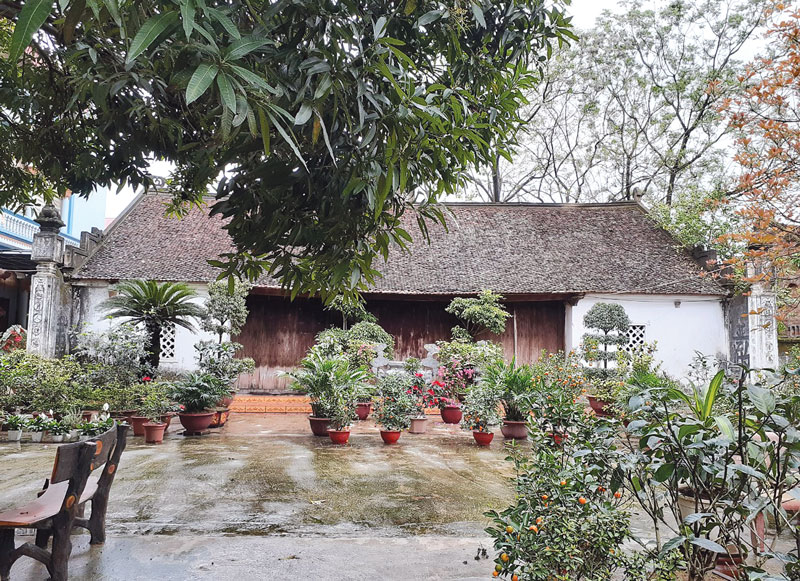The Three Treasures of Bo Vang Pagoda.
The ancient temple was completely destroyed during the resistance war against the French colonialists (1945 – 1954). When peace was restored, a small temple was erected right next to the dyke near the Cau River to serve as a place to worship Buddha. In 1992, the locality built the present temple on the old temple grounds. The pagoda consists of 2 main architectural works: Tam Bao Tower has a Dinh-shaped architectural plan that is the connection of 5 front halls and 2 upper halls, 5 compartments ancestral house – in the style of traditional architectural art. system in the Red River Delta region. The whole house frame is made of wood, the structural sets are according to the style of the top husband, the price of the gong, the lower the transmitter, the decoration and carvings mainly on the wooden components are the themes of the four spirits, the four quarters, the clouds and the flowers. stylized leaves.
The system of valuable ancient artifacts at Bo Vang Pagoda includes: 8 wooden statues dating to the Nguyen Dynasty (nineteenth century), 2 large stone steles, each carved with two statues on the front and side of the stele. The back is engraved with Chinese characters, the main content records the sending of the death anniversary to the temple, the stele was erected and engraved in the 7th Chinh Hoa year (1686). Especially in the current Bo Vang Pagoda campus, some architectural materials are still preserved such as: bluestone and emery stone pillars and many foundation stones dating back to the Ly Dynasty. In which, the most typical and valuable is the blue stone carved foot that is currently kept at the Bac Ninh Provincial Museum. The foot of the platform has a diameter of 75cm wide, 35cm high, the main surface is carved with the shape of a blooming lotus, in the middle of the foot is a circle with a diameter of 45cm, around 16 pairs of double lotus petals. The stout lotus petals have an average length of 12cm, a width of 10cm, and on the surface of each main lotus petal are carved two meandering “sin”-shaped dragons in opposite form – a typical product of sculpture art of the Ly dynasty (World War II). 11th century) has survived to this day. This type of rock foot is similar to that of Dam pagoda (Nam Son commune, Bac Ninh city), Phat Tich pagoda (Phat Tich commune, Tien Du district) and Tinh Lu pagoda (Lang Ngam commune, Gia Binh district). which are three pagodas dating back to the same time as Bo Vang Pagoda.
The extremely important material vestiges prove that Bo Vang Pagoda dates back to the Ly Dynasty (about the 11th century), these precious material cultural heritages are currently kept and preserved at the pagoda. Bo Vang and Bac Ninh Provincial Museum. Through this unique artifact, it helps to introduce to the public inside and outside the province to study and learn about the art of stone carving in Buddhist architectural works of the Ly Dynasty. I think the authorities at all levels should soon have a project to restore the architectural scale of the Bo Vang Pagoda to match its inherent value. The restoration project also established a system of historical, cultural and spiritual relics to serve tourists and pilgrims, thereby contributing to the formation of tours from Do Temple, through Temple of God. worshiping Thai Lieutenant Ly Thuong Kiet and then going to Bo Vang Pagoda,
Source: Collected internet.
